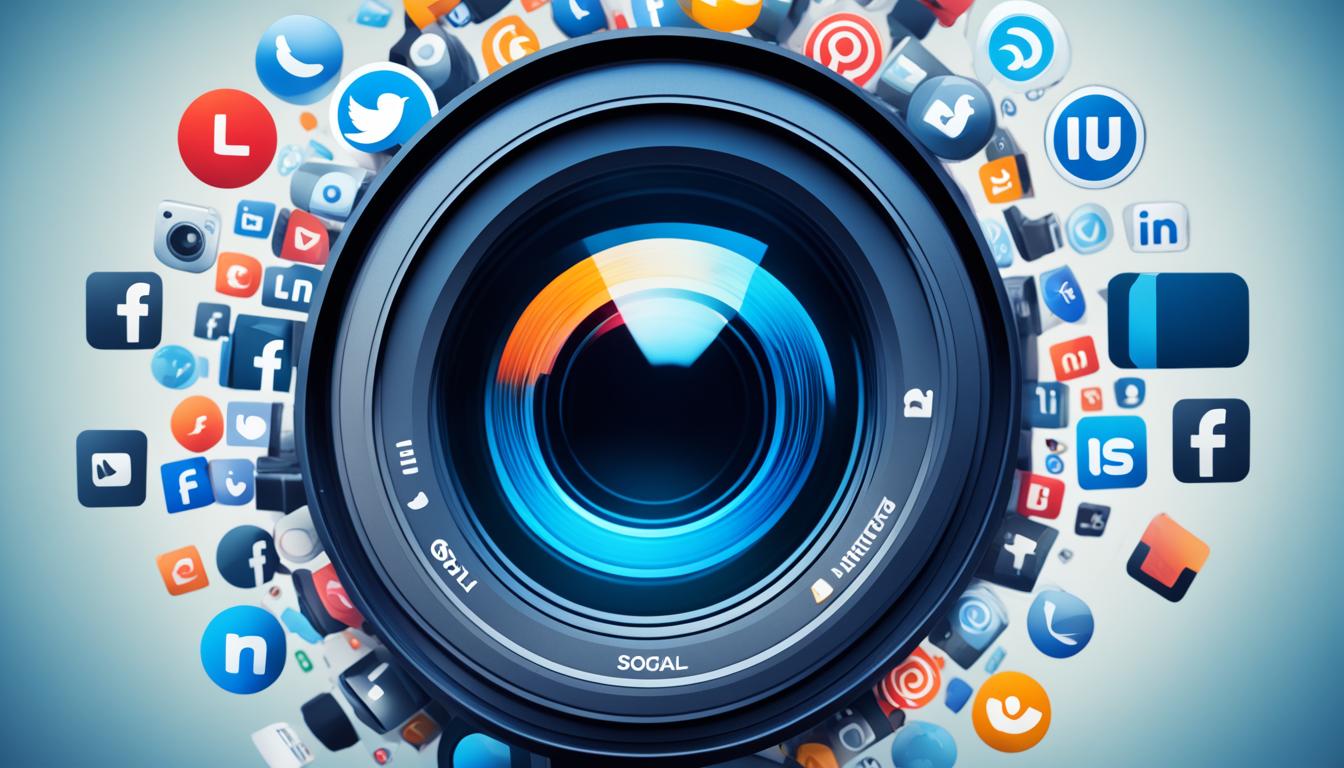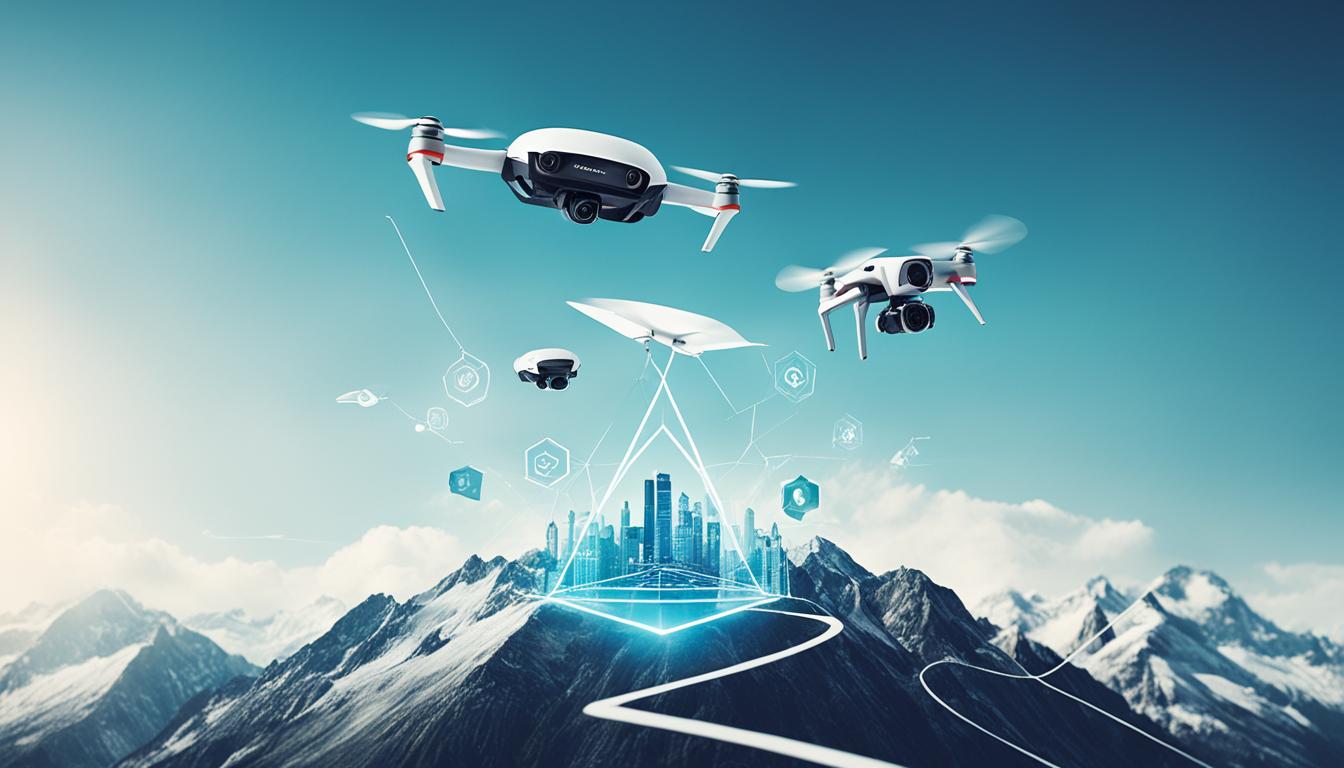The impact of social media on editorial photography has been significant. With the rise of social media platforms, photographers now face the challenge of standing out in a saturated market. The increased use of post-processing and editing techniques has become a common strategy for photographers to capture the attention of their audience. This trend started with the emergence of 500px in 2012, where photographers were rewarded for highly manipulated, fantasy-like images.
This has led to a shift in the perception of what is considered remarkable in photography, with digitally-created spectacles overshadowing realistic and natural photographs. While this has opened new avenues for artistic expression, it has also created a conundrum for photographers who value presenting nature as it is.
The quest for popularity on social media has influenced the type of content photographers create and the techniques they use. Understanding the psychological incentives for posting on social media, such as the need for social acceptance and rewards, helps explain why photographers feel the pressure to edit their photographs to fit the expectations of their audience.
The pursuit of popularity on social media platforms has a profound impact on the brain, triggering the release of dopamine and leading to addictive behaviors. However, this focus on popularity and edited images has also resulted in a growing gap between fiction and reality in the world of editorial photography.
Key Takeaways
- Social media has significantly impacted the field of editorial photography, leading to a shift in what is considered remarkable.
- The pursuit of popularity on social media has influenced the content and techniques used by photographers.
- Understanding the psychological incentives for posting on social media helps explain the pressure to edit photographs to fit audience expectations.
- The pursuit of popularity on social media can lead to addictive behaviors and a growing gap between fiction and reality in editorial photography.
The Role of Social Media in Observing Global Crises Through Photography
Social media has had a profound impact on the field of photojournalism, especially in the age of social media. With platforms like Twitter, Facebook, and Instagram, photojournalists now have an additional tool to capture and share powerful images directly with global audiences.
Social media serves as a crucial tool for observing and reporting on global crises, particularly in areas where journalists face restrictions or where communication channels are disrupted. In these situations, photojournalists can turn to social media to document and share the stories that might otherwise go untold.
One of the key benefits of using social media for crisis reporting is the ability to cover events in real-time. By leveraging social media platforms, photojournalists can capture and share images as events unfold, providing real-time updates to the world.
Furthermore, social media enables news organizations to gather important stories and leads through citizen journalism. When traditional reporting is not possible, citizen journalists can step in and use social media to provide valuable insights and eyewitness accounts. This citizen-generated content can supplement the narratives provided by professional photojournalists and news organizations.
Despite its advantages, however, there are challenges that come with using social media for photojournalism. One of the main challenges is verifying the authenticity and ownership of the images shared on social media platforms. News organizations must exercise due diligence in ensuring that they properly attribute and license the photos they use, especially when relying on user-generated content.
To summarize, social media has revolutionized how photojournalists observe and report on global crises. It offers technical advantages, such as real-time coverage and the ability to share images directly with global audiences. However, it also poses challenges in terms of verification and attribution. Nevertheless, social media remains an invaluable tool for photojournalists in documenting and sharing stories that matter.
The Rise of Digitally-Altered Photos on Social Media and its Impact on Self-Esteem
Social media’s influence on self-esteem and mental health has been evident, with the rise of digitally-altered photos contributing to a distorted perception of reality. Filters on platforms like Instagram and dedicated photo-editing apps have made it easier than ever for individuals to manipulate their appearance and create a false visual narrative. This practice of creating an idealized version of oneself has serious consequences on self-esteem and body image.
The constant exposure to edited and unrealistic images on social media can erode confidence and lead to negative beliefs about one’s own body. This, in turn, increases the risk of developing body dysmorphia and eating disorders. Research has shown that the use of social media, particularly among younger age groups, is linked to mental health issues such as depression and body dissatisfaction.
The gap between fiction and reality in terms of appearance is widening, with influencers and celebrities also editing their content, making it even more challenging for individuals to embrace their true selves. The pressure to conform to idealized beauty standards on social media perpetuates negative beliefs and can result in a higher desire for cosmetic surgeries.

In fact, the rise of digitally-altered photos on social media has contributed to a surge in cosmetic surgeries as individuals strive to meet unrealistic beauty standards. This trend is concerning as it not only poses physical risks but also perpetuates a culture of unattainable perfection.
The harmful effects of digitally-altered photos on self-esteem and body image highlight the need for greater awareness and education surrounding the authenticity and impact of social media content. Encouraging a more realistic portrayal of beauty and promoting self-acceptance have become essential in mitigating the negative effects of digitally-altered images on mental health and overall well-being.
| Negative Effects of Digitally-Altered Photos on Social Media | Potential Consequences |
|---|---|
| Distorted perception of reality | Eroded self-esteem and negative body image |
| Increase in body dysmorphia and eating disorders | Higher desire for cosmetic surgeries |
| Impact on mental health, including depression and body dissatisfaction | Unrealistic beauty standards and pressure to conform |
Addressing the impact of digitally-altered photos on social media requires a collective effort from individuals, social media platforms, and society as a whole. Promoting transparency and authenticity in social media content, as well as encouraging body positivity and self-acceptance, can foster a healthier online environment.
The Impact of Social Media on Traditional Photojournalism Standards
The changing landscape of photojournalism in the digital age has been heavily influenced by the role of social media in storytelling. While social media platforms provide new opportunities for photographers to share their work and reach wider audiences, it also presents a unique set of challenges for traditional photojournalists.
One of the significant challenges is the impact on narrative storytelling. In the era of instant gratification and clickbait, there is a growing pressure to capture attention quickly on social media. This can lead to a focus on sensationalism rather than the thoughtful and nuanced storytelling that traditional photojournalism strives for. The importance of context and depth can be overshadowed by the need to produce content that goes viral or generates high engagement.
Furthermore, the rise of social media has dramatically expanded the pool of photojournalists, including both amateurs and professionals. While this increased accessibility allows for a diverse range of perspectives, it also raises concerns about verification and the preservation of journalistic integrity. With the ease of sharing images instantly, it becomes crucial to ensure the accuracy and reliability of the content being disseminated.
Professional photojournalism, with its emphasis on ethics and storytelling, plays a vital role in maintaining the standards and integrity of the field. The value lies in providing not only captivating visuals but also the necessary context, analysis, and a deeper understanding of complex issues. By adhering to the principles of honest and accurate reporting, professional photojournalists contribute to a more comprehensive and accurate representation of events.
The rise of social media has challenged traditional photojournalism standards, but it also presents an opportunity to adapt and evolve within the changing landscape. By finding a balance between the demands of social media and the core principles of journalistic integrity, professional photojournalists can continue to make a significant impact through their work.
Table: Challenges of Social Media for Traditional Photojournalists
| Challenges | Impact |
|---|---|
| Lack of in-depth reporting | Potential loss of context and analysis |
| Verification and accuracy | Risk of spreading misinformation |
| Pressure for instant gratification | Potential focus on clickbait and sensationalism |
| Expansion of photojournalist pool | Concerns about journalistic standards |
The impact of social media on traditional photojournalism is undeniable. As the field continues to adapt to the ever-changing digital landscape, it is crucial to find ways to maintain journalistic integrity while leveraging the power of social media to tell compelling and important stories. By upholding ethical standards and emphasizing the importance of context and narrative, professional photojournalism can continue to play a pivotal role in storytelling and provide an accurate representation of events in the age of social media.
The Importance of Professional Photojournalism
Professional photojournalism plays a critical role in society by capturing and documenting moments that shape our understanding of the world. With the rapid spread of information through social media, the need for reliable and trustworthy sources of visual storytelling becomes even more essential. Professional photojournalists bring expertise, ethics, and a commitment to truth-seeking, ensuring that the stories they tell are grounded in journalistic integrity.
Professional photojournalism goes beyond capturing visually appealing images; it aims to provide context, shed light on underreported issues, and give a voice to marginalized communities. Through their work, professional photojournalists help shape public debate, foster empathy, and hold those in power accountable. In a world inundated with information, professional photojournalism stands as a beacon of truth and authenticity.
The Psychological Effects of Social Media on Body Image and Eating Disorders
Social media’s impact on body image has become a matter of concern, particularly in relation to eating disorders and body dysmorphic behaviors. The constant exposure to edited and idealized images on these platforms can have detrimental effects on individuals’ body perception and self-worth.
The influence of influencers and celebrities who heavily edit their content further exacerbates these challenges. Research indicates that teenagers and young adults, who spend a significant amount of time on social media, are particularly vulnerable to the negative effects on body image and self-esteem.
The culture of comparison perpetuated by social media plays a significant role in the development and perpetuation of unrealistic beauty standards. Many individuals, especially young people, believe that their physical appearance determines their self-worth, leading to a higher risk of body dissatisfaction and distorted self-perception.
To address these issues, ongoing efforts are needed to promote positive body image and educate individuals about the potential harm of social media on mental health. Encouraging authenticity, self-acceptance, and fostering a diverse representation of body types can help counteract the negative effects of social media on body image and eating disorders.
The Influence of Social Media on Body Image Challenges
| Eating Disorders and Body Dysmorphic Behaviors | Comparison and Self-Worth | The Influence of Influencers | Unrealistic Beauty Standards |
|---|---|---|---|
| • Increased risk of eating disorders due to idealized body images • Body dysmorphic behaviors fueled by comparisons to edited photos |
• Culture of comparison leading to lower self-esteem • Tendency to equate physical appearance with self-worth |
• Influencers promoting unrealistic beauty standards • Editing content to fit certain aesthetic trends |
• Perception of an idealized body image that is unattainable for many • Pressure to conform to societal beauty standards |
It is crucial to raise awareness about the psychological effects of social media on body image and eating disorders, especially among vulnerable populations such as teenagers and young adults. By fostering a healthier relationship with social media and promoting a more diverse and inclusive representation of beauty, we can help individuals develop a positive body image and improve their overall well-being.

The Connection Between Anxiety and Social Media’s Impact on Self-Esteem
Social media’s influence on self-esteem has a profound effect on mental health, particularly in relation to anxiety. The constant exposure to edited and idealized images, combined with the fear of missing out (FOMO), can contribute to feelings of inadequacy and heightened anxiety levels.
Social media platforms create a culture of comparison, where individuals constantly compare themselves to others, leading to a negative impact on self-esteem. The need for validation through likes, comments, and followers can further intensify these feelings of anxiety.
The excessive use of social media exacerbates these emotional challenges, as individuals become trapped in a cycle of seeking external validation and reassurance. The pressure to conform and fit in can lead to a lack of self-confidence and an increased risk of developing anxiety disorders.
The Fear of Missing Out (FOMO)
Fear of missing out, or FOMO, is a psychological phenomenon fueled by social media. It refers to the anxiety or apprehension experienced when one feels excluded or left out from social events or experiences. The constant updates and posts on social media platforms create a sense of urgency and a fear of being left behind.
This fear further reinforces the need for validation and social acceptance, as individuals strive to ensure they are not missing out on important opportunities or experiences. The fear of missing out adds an additional layer of anxiety and pressure, as individuals feel compelled to constantly engage with social media to avoid feeling left out.
Social Comparison and Self-Esteem
Social media platforms facilitate constant social comparison, leading individuals to constantly measure their self-worth based on the achievements and successes of others. This comparison often results in negative self-evaluation, as individuals may feel inferior or inadequate compared to their peers.
The constant exposure to carefully curated highlight reels of others’ lives can distort perspectives and contribute to a negative evaluation of one’s own life and accomplishments. This, in turn, has a detrimental impact on self-esteem and can heighten feelings of anxiety.
“Comparison is the thief of joy.” – Theodore Roosevelt
The Need for Validation
Social media platforms have created a landscape where individuals seek validation and approval from others. The number of likes, comments, and followers has become markers of self-worth and validation. However, relying on external validation for self-esteem can be detrimental to mental health.
Constantly relying on others’ validation creates a dependency on external sources for self-worth, leaving individuals vulnerable to anxiety and self-doubt when they do not receive the desired validation. It is crucial to recognize the intrinsic value of self-acceptance and focus on building a strong sense of self-worth that is not contingent on social media metrics.
Managing Anxiety in the Age of Social Media
To manage anxiety in the age of social media, it is essential to adopt healthy coping mechanisms and prioritize self-care. Here are some strategies to consider:
- Limit social media use and establish boundaries for engagement.
- Practice self-compassion and cultivate a positive internal dialogue.
- Engage in offline activities that promote mental well-being, such as exercise, meditation, or spending time with loved ones.
- Focus on building supportive relationships and connections beyond social media.
- Challenge negative thoughts and actively practice gratitude.
By being mindful of our social media consumption and prioritizing our mental well-being, we can reduce the negative impact of social media on self-esteem and manage anxiety effectively.
Conclusion
The impact of social media on editorial photography and mental health cannot be denied. It has opened new avenues for artistic expression and storytelling, but it has also brought challenges in maintaining authenticity and promoting self-acceptance. The pressures of popularity and the desire for validation have influenced the content photographers create and how they edit their photographs.
The rise of digitally-altered photos on social media has distorted our perception of reality and contributed to an increased risk of body dysmorphia and eating disorders. However, we must recognize the power of storytelling in editorial photography and the value of professional photojournalism in providing context and depth to important stories.
It is essential that we find a balance in our use of social media, prioritizing authentic representation and self-acceptance. By promoting realistic portrayals of beauty and focusing on the power of storytelling, we can mitigate the negative effects of social media while harnessing its potential in the world of editorial photography. Let us embrace the need for balance, authenticity, and self-acceptance in order to create a healthier and more empowering environment in the digital age.
FAQ
What is the impact of social media on editorial photography?
Social media has had a significant impact on editorial photography. It has created a saturated market and influenced the type of content photographers create and the techniques they use.
How has social media affected the standards of photojournalism?
Social media has challenged traditional standards of photojournalism by creating a culture of instant gratification and clickbait. While it offers benefits, such as real-time coverage of events, it also poses challenges in terms of verification and journalistic integrity.
What are the psychological effects of social media on self-esteem and body image?
Social media’s influence on self-esteem and body image has resulted in a distorted perception of reality. The constant exposure to digitally-altered and idealized images can lead to negative beliefs and an increased risk of developing body dysmorphia and eating disorders.
How does social media impact the observation of global crises through photography?
Social media has revolutionized photojournalism by providing an additional set of eyes in conflict zones and crisis situations. It allows photojournalists to capture and share powerful images directly with global audiences, but also poses challenges in terms of image verification and ownership.
What is the connection between social media and anxiety?
Social media’s influence on self-esteem and the fear of missing out (FOMO) can contribute to feelings of inadequacy and anxiety. The constant comparison and seeking of validation can lead to a lack of self-confidence and an increased risk of anxiety disorders.
How can photojournalists navigate the impact of social media?
Photojournalists must adapt to the changing dynamics of social media while maintaining journalistic integrity. They can provide context and depth to important stories by prioritizing thoughtful and thought-provoking content.
What is the role of social media in promoting self-acceptance and authenticity in photography?
Social media has created a gap between fiction and reality in editorial photography. Finding a balance in social media use and promoting authenticity and self-acceptance can help mitigate the negative effects and harness the potential of social media in the field.
How Can Post-Processing Enhance the Impact of Editorial Photography on Social Media?
Post-processing can greatly optimize editorial images postprocessing for social media. Through adjusting exposure, colors, and contrast, photographers can ensure their visual storytelling is impactful and engaging. With the right editing techniques, editorial images can stand out and captivate audiences on social media platforms.
Source Links
- https://petapixel.com/2021/06/21/examining-social-medias-impact-on-landscape-and-nature-photography/
- https://www.theatlantic.com/technology/archive/2011/04/photojournalism-in-the-age-of-new-media/73083/
- https://www.priorygroup.com/blog/can-online-image-editing-on-social-media-contribute-to-eating-disorders




